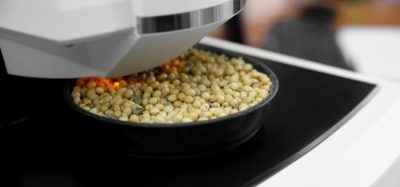Applying external quality control in food testing labs
- Like
- Digg
- Del
- Tumblr
- VKontakte
- Buffer
- Love This
- Odnoklassniki
- Meneame
- Blogger
- Amazon
- Yahoo Mail
- Gmail
- AOL
- Newsvine
- HackerNews
- Evernote
- MySpace
- Mail.ru
- Viadeo
- Line
- Comments
- Yummly
- SMS
- Viber
- Telegram
- Subscribe
- Skype
- Facebook Messenger
- Kakao
- LiveJournal
- Yammer
- Edgar
- Fintel
- Mix
- Instapaper
- Copy Link
Posted: 2 September 2017 | Mark Sykes | No comments yet
Quality control (QC) in food testing laboratories is often considered a necessary burden. A lot of time, money and effort goes into establishing QC mechanisms, especially for accreditation purposes. Mark Sykes, Scientific Advisor to Proficiency Testing at Fera Science, explains why the QC process should be normal, routine and have minimal adverse impact on the business.


All businesses should give careful consideration to the adverse effect that neglecting QC can have. Product recalls, which impact both your reputation and your bottom line, can be avoided. For laboratories, one of those QC tools should be an external reference, one that the laboratory has no direct control over. Other tools include proficiency testing (PT) and use of reference materials (RM) from an external supplier. This article looks at how these external tools can be applied in routine laboratory QC procedures and how their results should be interpreted.
What is the purpose of QC?
We often come across the term fit for purpose in relation to QC. The first question to ask is, therefore, what is the purpose of the procedure? The answers might depend on several different factors and require different types of QC. The following aspects should be considered:
- Is the analysis routine?
- Is the QC for the entire laboratory process or for individual parameters?
- Is it only needed today, or should it be repeated next month?
- Who will ask for the QC data?
- If there are multiple stakeholders, do they want the same QC measure or different measures?
All these purposes can be addressed using some kind of external reference material but it is equally important to consider how that QC tool is used. Some tools are intended to be generic, while others are intended to be used in a very specific way, according to the manufacturer. They might also be customised by the user to suit their own particular purposes. We can consider each of these external tool/purpose combinations separately.
Generic tools using PT
Proficiency testing (PT) is a measure of performance of the laboratory. It is generally intended that the test materials are as similar to routine samples as possible and that only routine procedures are applied at the receiving laboratory. This is considered ‘business as usual’ or a check on normality (although non-normality might be highlighted by the PT itself). The operation of the PT is very simple: participants register, test samples are received and analysed at the laboratories, results are returned and a report issued. The statistical analysis and performance assessments are entirely in the hands of the PT provider from whom the participants receive their z-score (or other assessment). There is no attribution to an individual or (usually) method parameter, but the statistics are robust due to a large dataset and objective criteria. The PT results can be used to support accreditation but it is only a single instance of QC. Long-term trends must be built up over a number of similar PTs, possibly over a period of several years. Provision of routine PT in the food testing area is served by a number of suppliers.
Generic (routine) tools using RM
This QC tool alludes to the repetitive use of a test material. In this context, the term ‘reference material’ (RM) is generic and should not be confused with certified RMs for calibration purposes. For use as a QC tool, an RM should be sufficiently well characterised and stable for repeated routine analysis over the short to medium term (or longer). This enables the user to build a control chart of results for the same material and to monitor trends in the data. It can be used for the laboratory process as a whole but also to derive data on individual processes; be they technicians, method parameters, or pieces of equipment. The typical application of such an RM would be to analyse it with each routine batch of samples. The acceptance criteria of the result are up to the laboratory manager but include giving it a z-score, assigning a relative recovery, or both. The acceptable range depends on the purpose of the analysis.
What should the RMs be? One option is for them to be produced within the laboratory (use of an existing sample, for example) but this has the disadvantage of it not having been externally characterised. It is, however, the most cost-effective tool. Alternatively, the RM could be surplus material from a PT exercise. Many PT providers sell their surplus test materials post-PT and it is still a very cost-effective source of QC material. It also has the advantage that the material is known to be homogeneous, characterised and with a defined stability.
Specific tools using PT or RM
This topic addresses specific questions of QC that are not adequately serviced by routine PT or use of routine RM. This is the adoption of QC materials but with revised acceptance criteria, either defined by the laboratory or working in collaboration with a test material supplier. Either the material itself can be customised (bespoke) or the statistical criteria can be, or both.
This is a more expensive option but the cost is justified by the purpose, especially where there are multiple stakeholders. Such a situation might arise where a food manufacturer uses several laboratories to test its products. Where products are specific to a particular manufacturer it necessitates the involvement of only a few laboratories and having QC requirements peculiar to those products. Similarly, commercial testing services often employ laboratories across multiple sites internationally and a common QC tool is essential to understanding the equivalence of the facilities within that network.
How can this work in practice? One method is to adopt an existing test material (PT or RM) but assign different acceptance criteria for the customer. The assigned values can be derived from the larger population (the larger dataset giving increased confidence) but with alternative target variance for the customer’s network. For example, where the Horwitz equation as a general model might be used in a PT to assess performance, a tighter standard deviation might be requested for the bespoke reporting.
The other principal method is a completely bespoke test material production and characterisation, possibly with bespoke performance assessments.
Long-term trends
Whichever QC tool is chosen, the emphasis should be on building control charts that demonstrate laboratory performance over time. A simple visual chart can easily show inherent precision and bias issues. It should be remembered that a PT is an inter-laboratory exercise, although many individual laboratories want some measure of intra-laboratory performance.
Externally produced test materials are invaluable for food testing laboratories to apply appropriate quality control measures. They can be used in several ways to suit several purposes – either applied at the individual level or at multiple sites. Scheduled PTs or routine production RMs are the most easily available options, but the food testing industry should consider bespoke applications for non-routine purposes. Close collaboration with a PT or RM provider would produce a QC measure that is not otherwise available.
Biography











